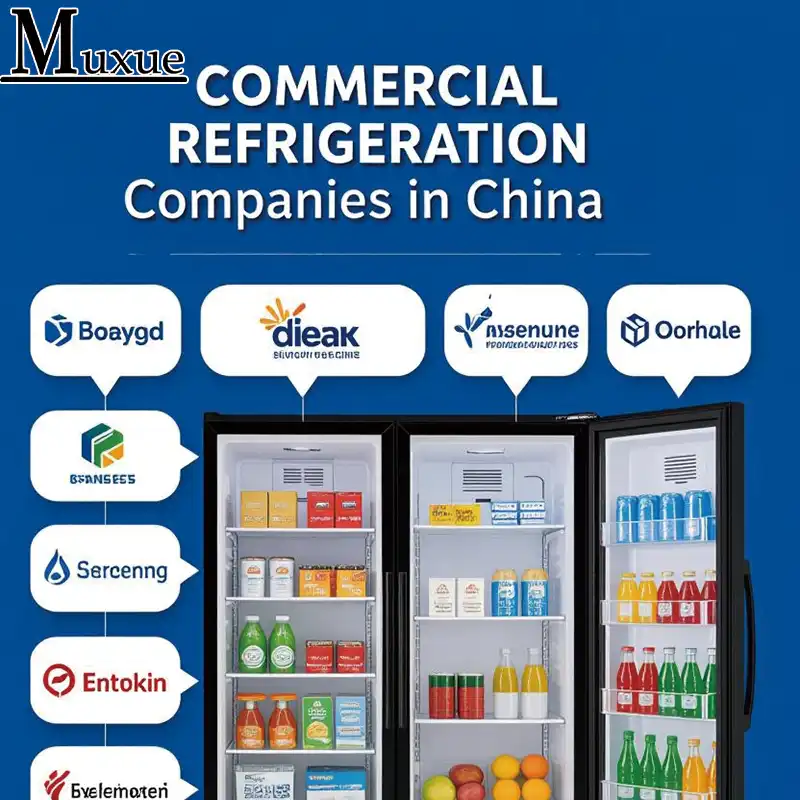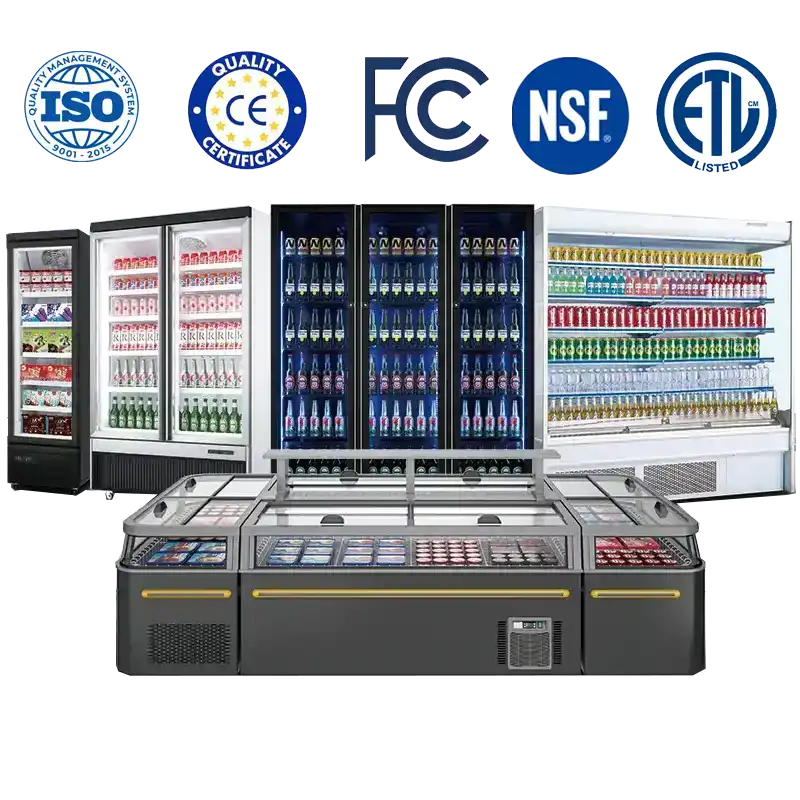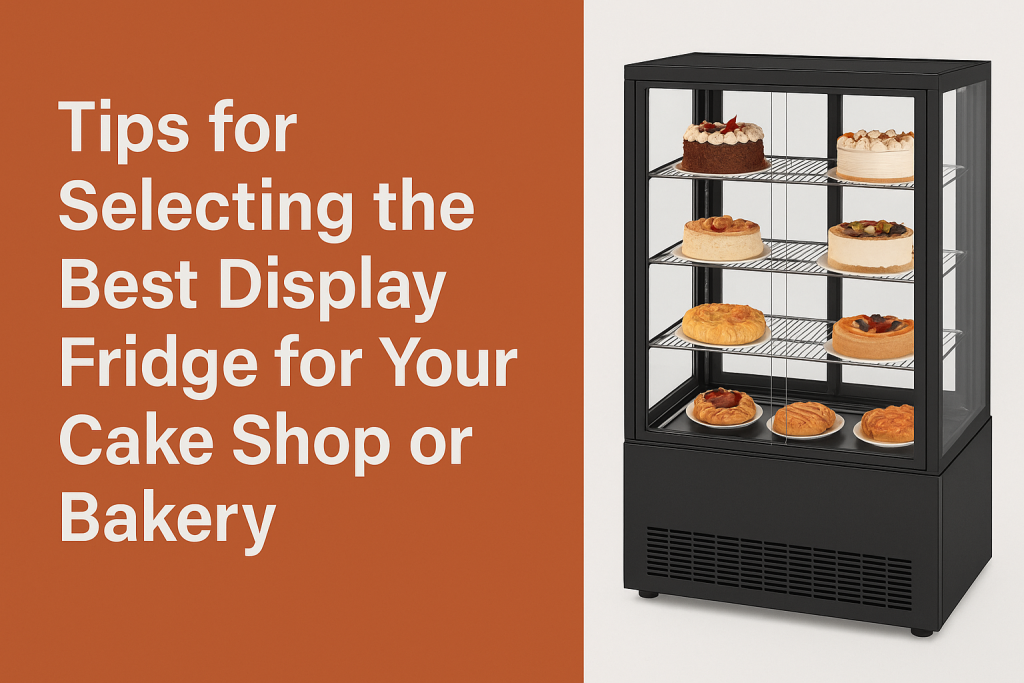Introduction
When planning commercial refrigeration for your business, one of the most critical decisions you’ll face is choosing between remote and built-in (self-contained) refrigeration systems. This choice impacts everything from installation costs and energy efficiency to maintenance requirements and operational flexibility. Whether you’re operating a restaurant, hotel, bakery, or supermarket, understanding the differences between these systems is essential for making an informed investment that serves your business needs both now and in the future.
The commercial refrigeration market has evolved significantly over the past decade, with technological advancements making both remote and built-in systems more efficient and reliable than ever before. However, the fundamental differences between these approaches remain crucial for business owners to understand. This comprehensive guide will explore every aspect of both systems, providing you with the detailed information needed to make the optimal choice for your specific operational requirements.
Understanding the Two Systems
Built-In (Self-Contained) Refrigeration Systems
Built-in refrigeration units, also known as self-contained systems, integrate all cooling components—compressor, condenser, evaporator, and controls—within a single cabinet. These are the familiar reach-in refrigerators, display cases, and undercounter units commonly seen in commercial kitchens and retail spaces.
Key Characteristics:
- All components housed within the unit
- Plug-and-play installation
- Individual temperature control per unit
- Typically air-cooled systems
- Standardized sizing and configurations
- Independent operation from other units
Technical Components: Built-in systems contain the complete refrigeration circuit within each unit. The compressor, typically located at the bottom or rear of the cabinet, circulates refrigerant through the evaporator coils inside the storage compartment. The condenser then rejects heat either through natural convection or with the assistance of fans. Modern built-in units often incorporate advanced features such as digital temperature controls, automatic defrost systems, and energy-saving modes.
Installation Requirements: The installation process for built-in systems is relatively straightforward, requiring primarily electrical connections and adequate ventilation space. Most units operate on standard commercial electrical circuits and don’t require specialized plumbing or refrigerant piping. This simplicity makes them particularly suitable for retrofit projects and spaces where structural modifications are limited.
Remote Refrigeration Systems
Remote refrigeration systems separate the cooling components, with the compressor and condenser located in a remote machinery room or outdoor location, connected to multiple display cases or cold rooms through refrigerant piping.
Key Characteristics:
- Centralized compressor/condenser unit
- Multiple cooling points served by one system
- Requires professional installation and piping
- Can be air-cooled or water-cooled
- Scalable capacity for future expansion
- Centralized monitoring and control
System Architecture: Remote systems operate on a centralized cooling principle, where a single large compressor unit serves multiple cooling endpoints through an extensive network of refrigerant pipes. The remote condensing unit can be located in a dedicated machinery room, on the roof, or in another outdoor location, while evaporator units are installed directly in the refrigerated spaces. This separation allows for more efficient heat rejection and noise reduction in occupied areas.
Installation Complexity: Installing remote refrigeration systems requires careful planning and professional expertise. The process involves designing the refrigerant piping layout, calculating pressure drops, selecting appropriate pipe sizes, and ensuring proper insulation. Additionally, the system requires adequate space for the remote condensing unit and may need structural modifications to accommodate piping runs between different areas of the facility.
Detailed Comparison: Key Decision Factors
Installation and Space Considerations
Built-In Systems:
- Easier Installation: Minimal structural modifications required, typically completed within hours rather than days
- Flexible Placement: Can be positioned virtually anywhere with electrical access and adequate ventilation clearance
- Space Efficient: No need for separate machinery rooms or dedicated equipment spaces
- Quick Deployment: Ideal for temporary setups, pop-up locations, or spaces with layout constraints
- Modular Approach: Additional units can be added incrementally as business needs expand
- Lower Installation Labor: Reduced professional labor requirements compared to complex piping installations
Remote Systems:
- Complex Installation: Requires professional planning, engineering calculations, and specialized refrigerant piping expertise
- Dedicated Space Needed: Machinery room or outdoor pad required for condenser units, typically 50-200 square feet depending on system size
- Fixed Infrastructure: Less flexibility for future layout changes once piping is installed
- Higher Initial Investment: Significant upfront installation costs for piping, structural work, and professional services
- Longer Installation Timeline: Projects typically require several days to weeks depending on system complexity
- Professional Coordination: Requires coordination between multiple trades including electricians, plumbers, and refrigeration specialists
Energy Efficiency and Operating Costs
Built-In Systems:
- Individual Operation: Each unit operates independently, potentially leading to higher overall energy consumption due to multiple compressors
- Heat Rejection: Rejects heat directly into the occupied space, increasing air conditioning loads during warm months
- Simpler Maintenance: Individual unit failures don’t affect entire system operation
- Lower Peak Demand: Spreads electrical load across multiple circuits, potentially reducing demand charges
- Standard Efficiency: Typically achieve COP (Coefficient of Performance) ratings between 2.0 and 3.0
- Predictable Consumption: Energy usage is relatively consistent and easy to monitor per unit
Remote Systems:
- Centralized Efficiency: Single, larger compressor often operates more efficiently than multiple small units, with COP ratings typically between 3.0 and 4.5
- Heat Management: Heat rejection occurs away from occupied spaces, reducing cooling costs and improving working conditions
- Economies of Scale: More cost-effective for cooling large areas or multiple units due to shared infrastructure
- Advanced Controls: Potential for sophisticated energy management systems, variable speed drives, and heat recovery options
- Seasonal Efficiency: Maintain high efficiency levels even during extreme ambient conditions
- Load Management: Can sequence compressor operation to optimize energy usage across different cooling loads
Performance and Temperature Control
Built-In Systems:
- Independent Control: Each unit maintains its own temperature setting, allowing for different temperature zones
- Quick Recovery: Individual units recover temperature quickly after door openings due to dedicated cooling capacity
- Limited Capacity: May struggle in high-ambient temperatures or heavy-use scenarios with frequent door openings
- Consistent Performance: Performance not affected by distance from compressor or piping length limitations
- Temperature Uniformity: Generally good air distribution within individual cabinets
- Response Time: Immediate cooling response to temperature changes within the unit
Remote Systems:
- Centralized Control: Unified temperature management across multiple points with centralized monitoring capabilities
- Stable Operation: Excellent temperature stability under varying load conditions and door opening frequencies
- Customizable Capacity: Can be sized precisely for specific cooling requirements and future expansion needs
- Distance Limitations: Performance can be affected by piping length and layout, requiring careful system design
- Simultaneous Cooling: Capable of maintaining multiple temperature zones from a single compressor system
- Redundancy Options: Can incorporate backup compressors or multiple circuit designs for critical applications
Maintenance and Reliability
Built-In Systems:
- Simplified Maintenance: Individual unit servicing doesn’t affect other equipment, minimizing operational disruptions
- Easier Troubleshooting: Problems are contained within single units, making diagnosis more straightforward
- Multiple Failure Points: More individual components that can fail, though each failure affects only one unit
- Quick Replacement: Failed units can be swapped out with minimal downtime, often within hours
- Standardized Parts: Common components and readily available replacement units
- Preventive Maintenance: Simple maintenance schedules with clear service requirements for each unit
- Typical Lifespan: Generally 10-15 years with proper maintenance
Remote Systems:
- Centralized Maintenance: All major components accessible in one location, streamlining service procedures
- Single Point of Failure: Compressor failure affects entire system, requiring robust redundancy planning
- Professional Service Required: Requires specialized technicians for repairs and system diagnostics
- Longer Lifespan: High-quality central components often last longer than individual units, typically 15-20 years vs 10-15 years
- Complex Diagnostics: Sophisticated monitoring systems can predict failures but require expert interpretation
- Preventive Maintenance Programs: Comprehensive service agreements covering all system components
Application Scenarios: Which System Fits Your Business?
When to Choose Built-In Refrigeration
Small to Medium Restaurants:
- Limited kitchen space with no room for machinery rooms or extensive piping
- Flexible layout requirements for seasonal menu changes or operational adjustments
- Budget constraints for initial investment and installation costs
- Seasonal or temporary operations where equipment mobility is valuable
- Limited technical expertise among staff for complex system operation
- Multiple temperature zone requirements within compact spaces
Bakery Operations:
- Multiple temperature zones needed for different product types (dough retardation, ingredient storage, finished product display)
- Frequent layout changes to accommodate seasonal products or production workflow adjustments
- Limited technical maintenance staff requiring simple, straightforward equipment
- Display cases with specific aesthetic requirements and custom configurations
- Variable production schedules requiring flexible equipment operation
- Space constraints in retail areas where every square foot counts
Hotel Mini-Bars and Small Kitchens:
- Distributed cooling requirements across multiple floors or guest rooms
- Renovation projects with space constraints and limited structural modifications
- Individual room temperature control needs for guest comfort and satisfaction
- Simplified maintenance procedures for hotel engineering staff
- Modular expansion capabilities as hotel occupancy or services expand
- Noise sensitivity in guest-occupied areas requiring quiet operation
When Remote Refrigeration Excels
Large Restaurants and Commercial Kitchens:
- High cooling capacity requirements for extensive food preparation and storage
- Multiple preparation and storage areas requiring consistent temperature management
- Long operating hours with heavy usage patterns and frequent door openings
- Professional maintenance staff available for system monitoring and service
- Energy efficiency priorities with focus on reducing operational costs
- Future expansion plans requiring scalable cooling capacity
Supermarkets and Retail Food Stores:
- Extensive display case networks with multiple temperature requirements
- Consistent temperature requirements across large sales floor areas
- Energy efficiency priorities with significant electrical consumption
- Long-term operational planning with stable layout configurations
- Centralized monitoring capabilities for multi-store operations
- High-ambient conditions requiring robust cooling performance
Hotel Banquet and Catering Operations:
- Large-volume food storage needs for event preparation and service
- Centralized kitchen operations with multiple refrigeration requirements
- High-ambient temperature environments in kitchen areas
- 24/7 operational requirements with minimal downtime tolerance
- Professional engineering staff capable of managing complex systems
- Multiple temperature zones for different food safety requirements
Making the Right Choice for Your Business
The decision between remote and built-in refrigeration ultimately depends on your specific operational needs, space constraints, budget considerations, and long-term business goals. Consider these key questions during your evaluation process:
Growth and Expansion Planning:
- What is your projected growth over the next 5-10 years?
- Are you planning any facility expansions or renovations?
- How might your refrigeration needs change with business growth?
- Do you anticipate changes in your product mix or service offerings?
Space and Infrastructure Assessment:
- Do you have adequate space for machinery rooms or outdoor condenser placement?
- What are the structural limitations of your current facility?
- Are there zoning or regulatory restrictions affecting equipment placement?
- How will equipment placement impact workflow efficiency?
Operational Capabilities:
- What is your technical maintenance capability and staff expertise?
- How critical is equipment uptime to your operations?
- Do you have established relationships with qualified service providers?
- What are your staff training requirements for different system types?
Financial Considerations:
- How critical is energy efficiency to your operating costs?
- What is your budget for initial investment versus long-term operating costs?
- Are there utility incentives or rebates available for energy-efficient systems?
- How do you evaluate return on investment for refrigeration equipment?
Environmental Factors:
- What are the ambient temperature conditions in your facility?
- How does local climate affect system performance and efficiency?
- Are there environmental regulations affecting refrigerant choices?
- What sustainability goals does your organization have?
Muxue Comprehensive Refrigeration Solutions
At Muxue, we understand that every commercial operation has unique refrigeration requirements. Our comprehensive approach to refrigeration solutions ensures that whether you choose built-in or remote systems, you receive optimized performance tailored to your specific business needs.
Custom Design Expertise: Our engineering team specializes in creating customized refrigeration solutions that address the specific challenges of different commercial environments. We conduct thorough site assessments, analyze operational requirements, and develop tailored solutions that optimize both performance and efficiency. Whether you need compact built-in units for a boutique bakery or a sophisticated remote system for a large hotel chain, our design process ensures perfect alignment with your business objectives.
Energy Efficiency Technologies: Muxue integrates the latest energy-efficient technologies into all our refrigeration solutions. Our built-in units feature advanced compressor designs, improved insulation materials, and smart control systems that minimize energy consumption. For remote systems, we incorporate variable speed drives, heat recovery options, and sophisticated energy management systems that can reduce operating costs by up to 40% compared to conventional systems.
Professional Installation Services: Our certified installation teams ensure that every Muxue refrigeration system is installed to the highest standards, with minimal disruption to your business operations. We coordinate all aspects of the installation process, from electrical and plumbing connections to structural modifications and system commissioning. Our project management approach ensures timelines are met, budgets are maintained, and quality standards are exceeded.
Ongoing Maintenance and Support: Muxue provides comprehensive maintenance programs designed to maximize equipment lifespan and minimize operational disruptions. Our preventive maintenance schedules, 24/7 emergency support, and remote monitoring capabilities ensure your refrigeration systems operate reliably year after year. We offer flexible service agreements tailored to your specific needs and budget requirements.
Scalable Solutions for Growth: Understanding that businesses evolve, Muxue designs refrigeration solutions with scalability in mind. Our modular built-in systems allow for easy expansion as your space or capacity needs grow. For remote systems, we incorporate design features that facilitate future capacity increases or layout modifications without requiring complete system replacements.
Industry-Specific Applications: With extensive experience across multiple commercial sectors, Muxue has developed specialized expertise in industry-specific refrigeration requirements:
Hotel and Hospitality Solutions:
- Custom mini-bar systems with quiet operation and energy efficiency
- Banquet kitchen refrigeration with high-capacity requirements
- Multiple temperature zones for different food service areas
- 24/7 reliability with minimal noise disturbance
Restaurant and Food Service:
- Compact undercounter units for space-constrained kitchens
- High-performance reach-in refrigerators for busy service periods
- Display cases that enhance food presentation while maintaining temperature
- Durability for high-usage commercial environments
Bakery and Pastry Operations:
- Specialized temperature control for dough retardation and proofing
- Glass display cases that showcase products while maintaining freshness
- Multiple temperature zones for ingredient storage and finished products
- Easy cleaning and maintenance for food safety compliance
Retail and Supermarket Applications:
- Extensive display case networks with consistent temperature management
- Energy-efficient systems that reduce operating costs
- Custom configurations for specific product types and store layouts
- Reliability for continuous operation during business hours
Our Integrated Solutions Include:
- Customized system design for hotels, restaurants, and bakeries
- Energy-efficient technologies that reduce operating costs by 20-40%
- Professional installation services with minimal business disruption
- Ongoing maintenance and support programs with 24/7 availability
- Scalable solutions that grow with your business requirements
- Industry-specific expertise across multiple commercial sectors
- Advanced monitoring and control systems for optimal performance
- Compliance with all relevant safety and environmental standards
From compact built-in units for boutique bakeries to sophisticated remote systems for large hotel chains, Muxue provides end-to-end refrigeration solutions that deliver reliability, efficiency, and performance. Our expertise spans multiple commercial sectors, ensuring we can recommend the perfect balance of built-in and remote refrigeration to meet your specific operational requirements and budget constraints.
Contact Muxue today to discuss how our comprehensive refrigeration solutions can optimize your commercial operations, reduce energy costs, and provide the reliable temperature control your business depends on. Visit www.mxfridge.com for more information or to schedule a consultation.





